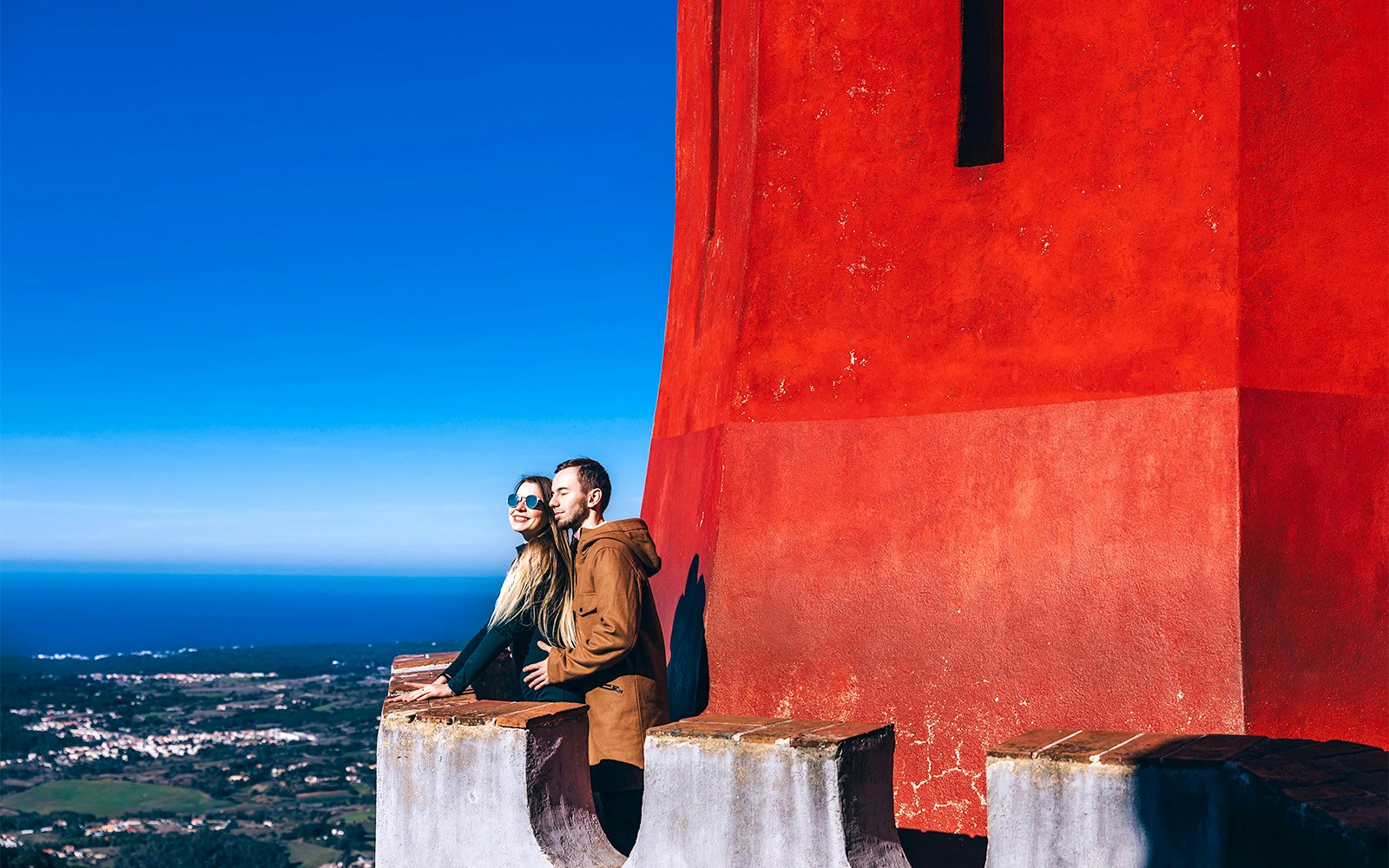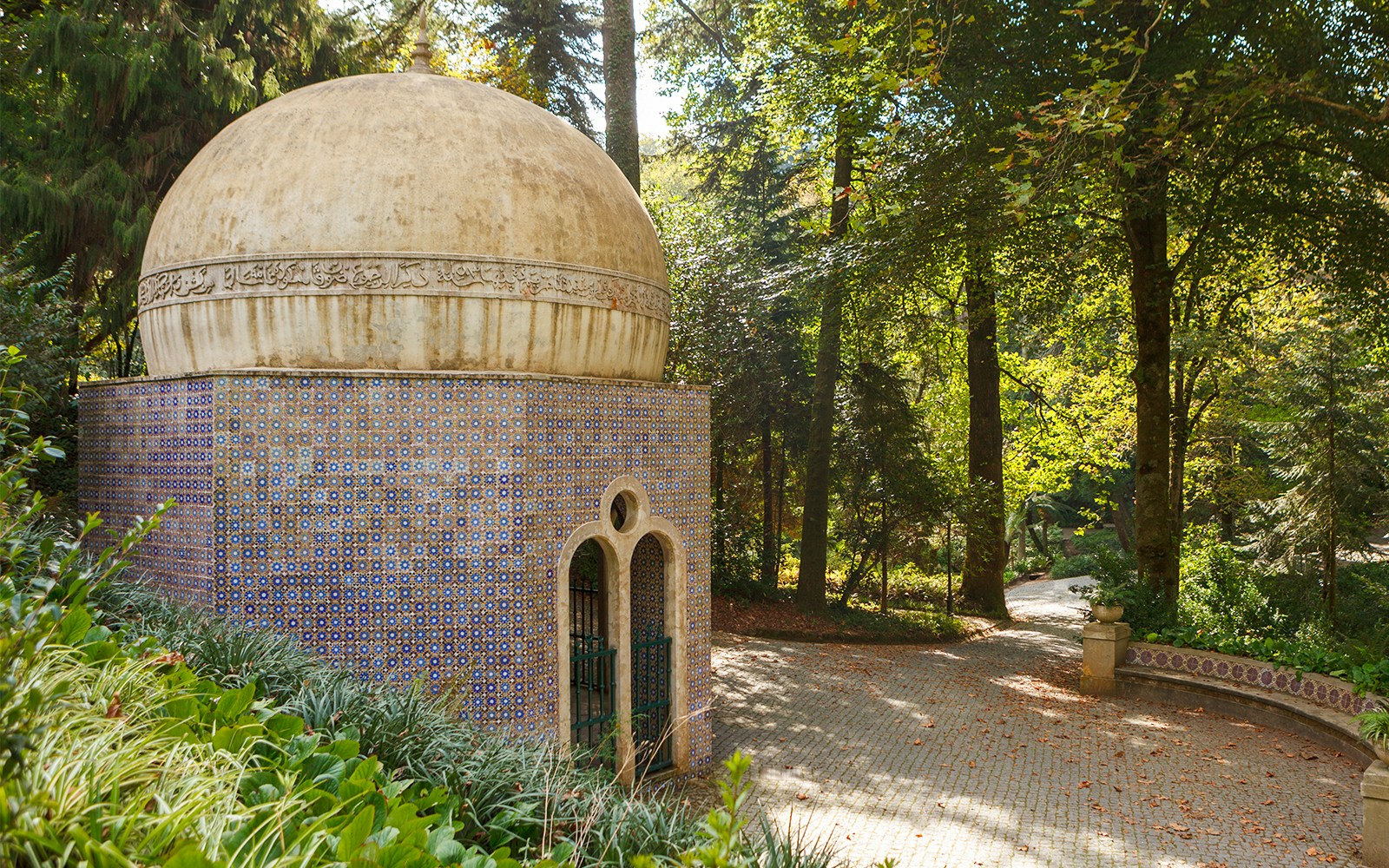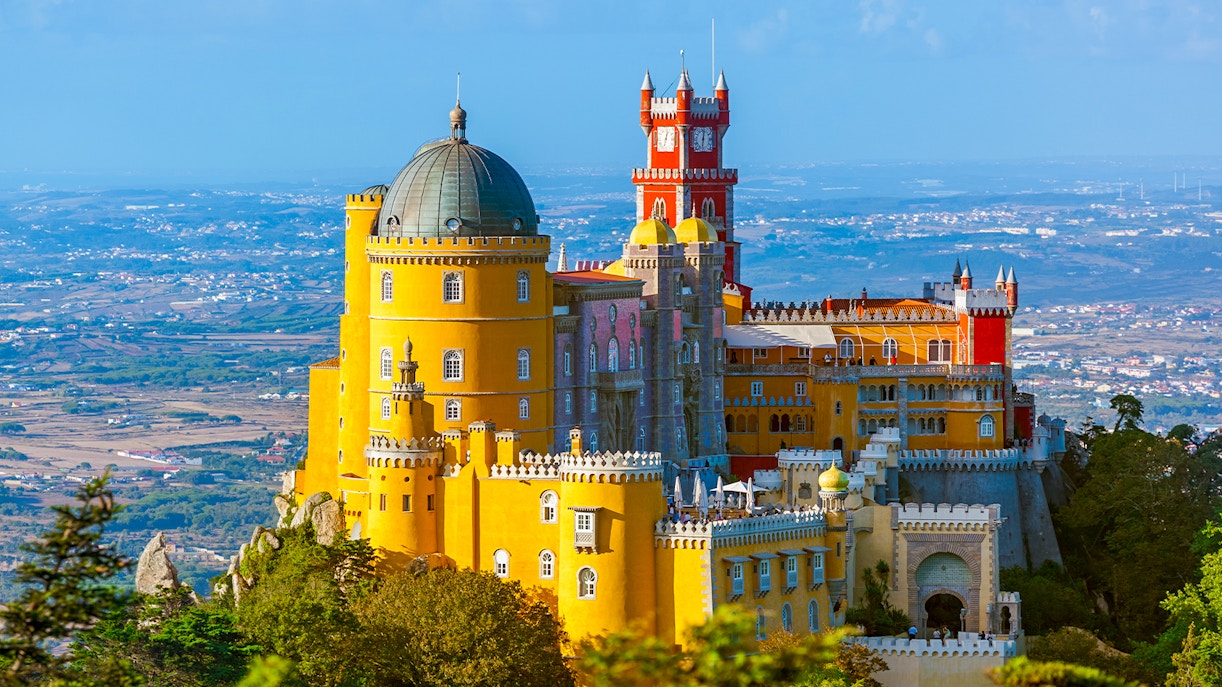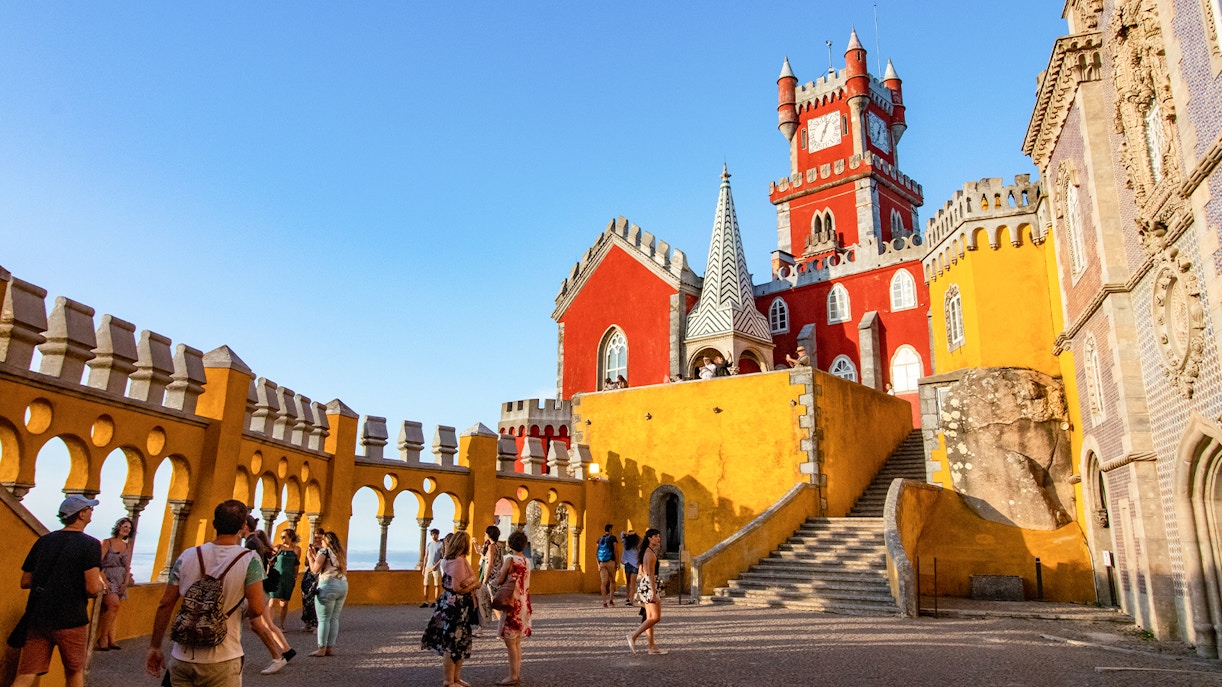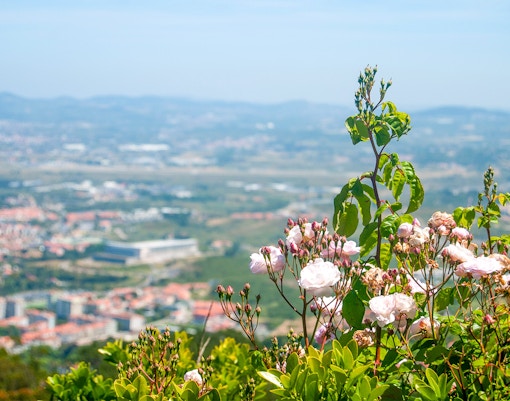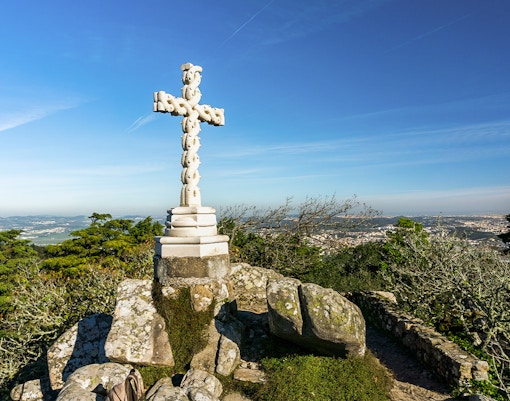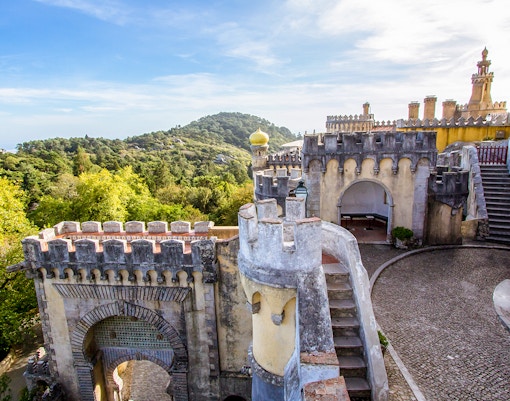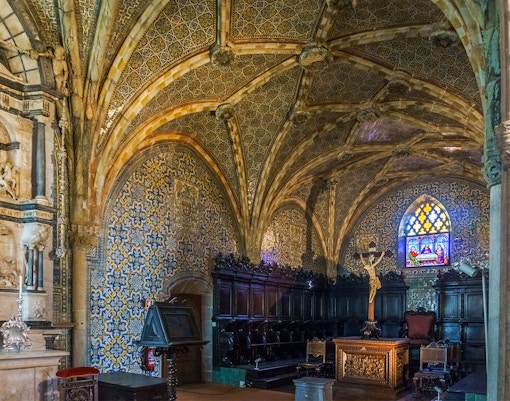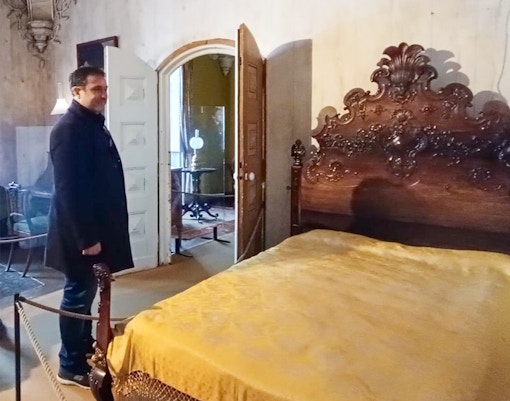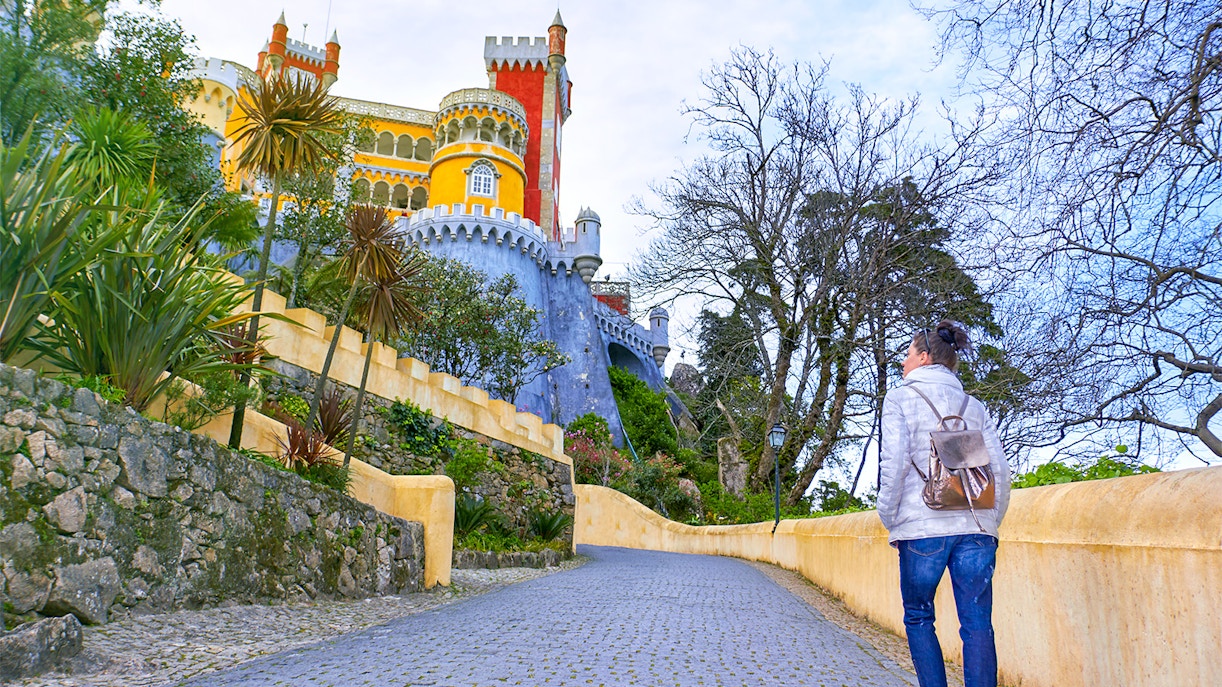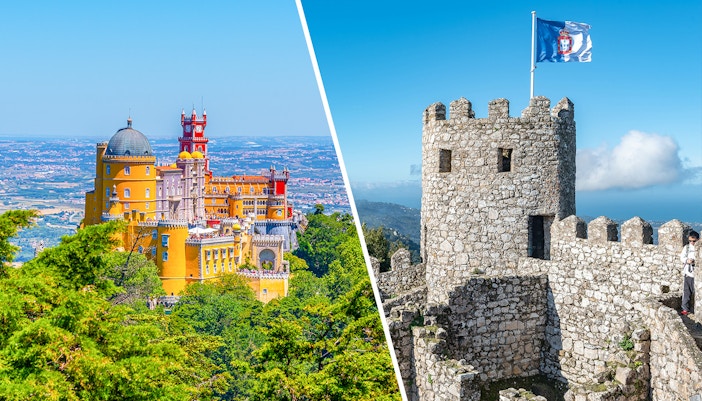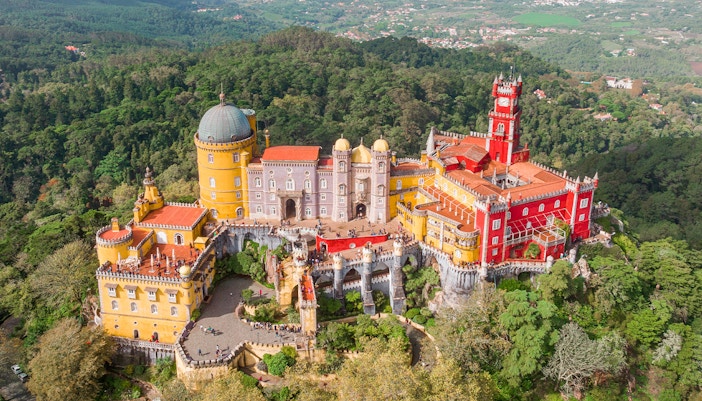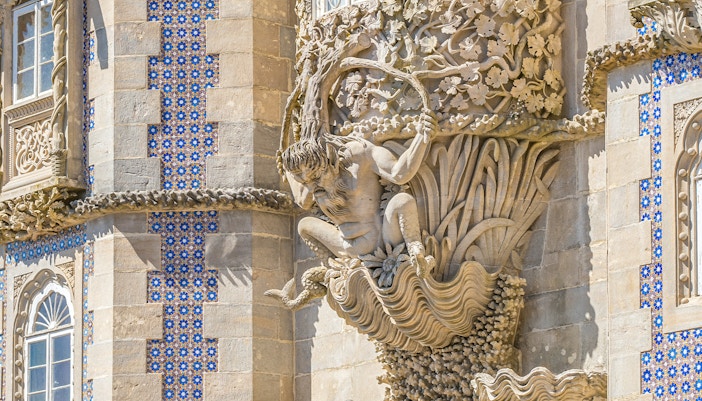Pena Palace, a romanticism era castle, boasts a rich blend of architectural styles influenced by Neo-Gothic, Neo-Manueline, Neo-Islamic, and Neo-Renaissance elements.
Originally a Hieronymite convent, the palace underwent extensive renovations in the 1840s, integrating existing structures with new additions like the clock tower and terraces.
Notable features include the Arches Yard with its Moorish arches, the Queen's Terrace offering panoramic views, and the interiors featuring stuccos, trompe-l'œil paintings, and ornate tile revetments. These are decorative techniques including plasterwork, optical illusion paintings, and intricate tile coverings.
Surrounding the palace is the sprawling Pena Park, created by King Ferdinand II, featuring exotic flora from around the world, including sequoias, magnolias, and ferns.


